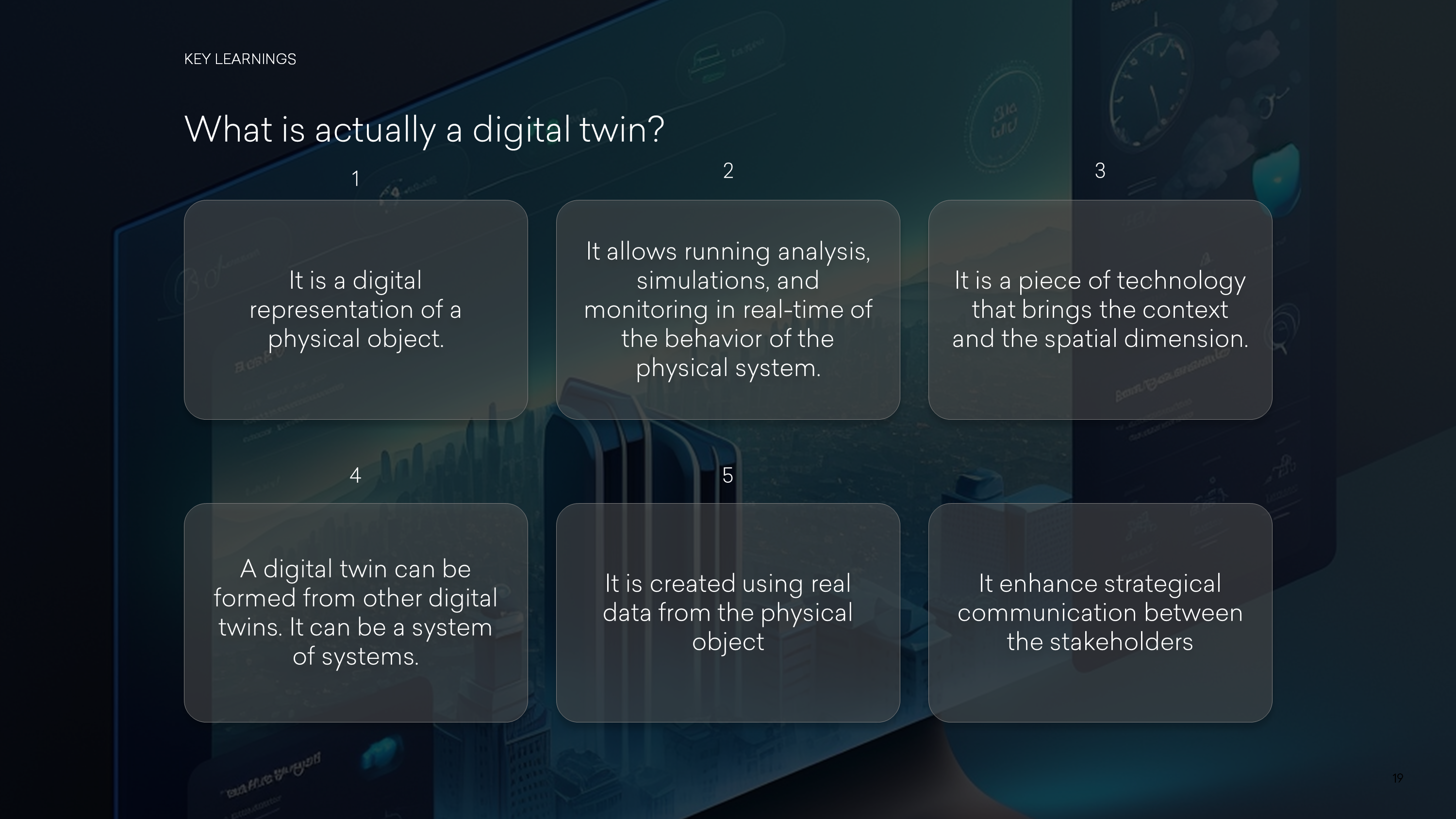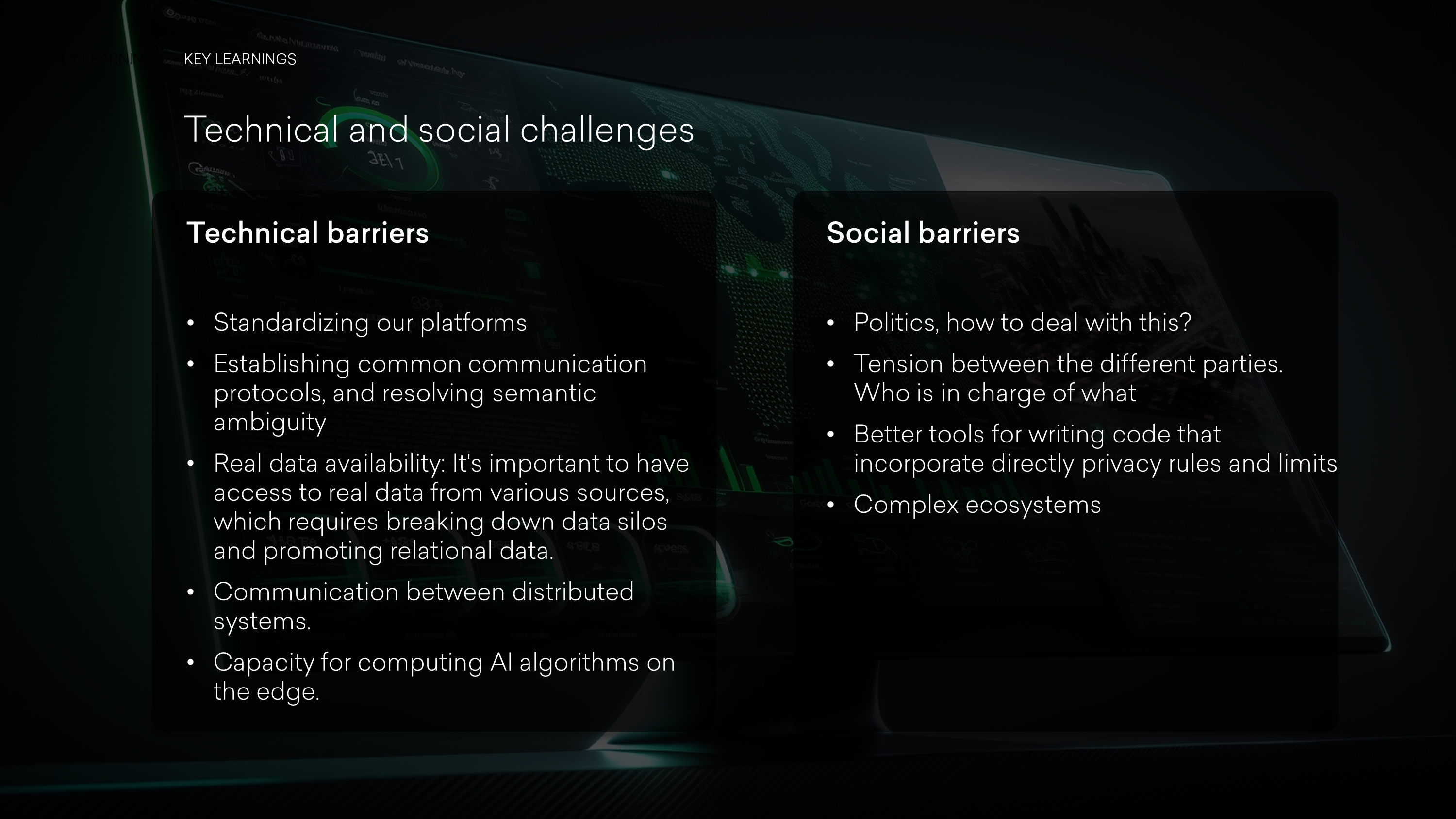
Unleashing the Power of Digital Twins: Embracing Creativity for Maximum Potential.
Iñigo Esteban Marina
Data & Strategic Designer
How Digital Twins are Revolutionizing Operations: Real-time Monitoring, Decision-making, Enhanced Communication, and what are the opportunities for designers and creative profiles.
It's likely not the first time you've heard about "Digital Twins," but if I asked you for a precise definition, you might not be able to provide one. Don't worry, it's normal.
If we search for a common and accepted definition for this concept, we will find many different ones, and so far, they are all valid. For the moment we can define it as a digital copy of the real world that uses real data and try to represent the behaviors from reality.
All agree that it is a key technology that can provide a new level of knowledge about the operation and maintenance of complex systems, resulting in improvements in efficiency, reliability, and costs.
It seems like we're talking about something very technical, focused on the industrial sector and with the goal of controlling and optimizing what already exists. So, what is the role of designers and creatives in this world of scientists, data, statistics, and algorithms? What can we contribute?
Based on this foundation, let´s delve into the benefits of "Digital Twins," their barriers and challenges, and what we should consider when working with them, and finally, I will share my vision. That is, we will explore the context to ultimately share my perspective and attempt to answer the questions raised.
For "Digital Twins" to be a reality today, we've had to develop other necessary technologies such as IoT, AI, Edge Computing, Augmented Reality, or 5G. Without these technologies, we wouldn't be able to have a "Digital Twin." It's the convergence of all these technologies that have made the appearance of DT possible.
But how do these technologies relate? Let´s explain it using the following chart. As you can see, there are different layers of technology, and each one has a function.

We use the Internet of Things (IoT), which connects devices in the real world to the internet to constantly measure and send data to the cloud. The data is then dumped into a 3D digital model called a digital twin, where it can be visualized in real-time and historical data, and intelligent algorithms can be applied. When different objects with specific behaviors work together to form a larger system, we call it a system of systems or a digital twin that integrates other models. Finally, by using data, we can run advanced algorithms such as AI/ML to simulate or predict behaviors.
The coordination and integration of all these technologies result in a powerful system that allows us to establish optimal control over operations and is capable of providing key information when making decisions. So, what is a Digital Twin then?

The truth is that seeing this makes you want to implement this technology tremendously. However, DTs have not yet become popular in the business world and have not shown their potential. It is a technological piece that still has many barriers, both technological, political, and social.
Despite all these points, the future of DTs is promising. With the emergence of 5G and the exponential growth of the number of devices and sensors connected to the internet, the future of DTs is assured. But what do we need to know before working on any project that uses this technology? There are a few simple points that will help increase the chances of success.
The first thing we need to do is to understand the use case, which is the main objective of the model. Without this, we are likely to spend more time and resources. Defining a specific use case will help us understand the definition and detail needed by the model and the types of data we need. And this is key. If we pour in too much data, we will slow down the system and work inefficiently.
Another tip is to start small and then scale the product based on its feasibility, functionality, and MVP prototyping, as well as ensure the inclusivity and accessibility of all stakeholders. Thanks to these, we can align the intentions of everyone, understand the complexity of the projects, and plan coherently.

Therefore, once we understand what a digital twin is and the barriers, we could say that: "It is interesting to use a digital twin whenever we want to aggregate data from multiple sources and systems in order to build a unified and centralized complex model that can relate each data point to analyze the impact of certain system behavior in the past, present, and future to make an informed decision while we also leverage this model for communication purposes."
As we approach the end of this article, we have mainly focused on digital twin technologies and their applications in the operational and industrial sectors. The use of complex statistical formulas and algorithms by scientists has resulted in optimizing industrial processes and minimizing risks. However, as designers and creatives, where do we fit in, and what can we contribute?
Designers have a new material to work with – data. Instead of fearing data, we can use it as a source of information and as material to develop innovative solutions. In the past, design thinking, and user-centered thinking were crucial to defining successful products. Designers must approach the user's needs and fears to create personalized and successful solutions. Similarly, we can view data as an opportunity to create new relationships, cross-sources and build new indices or pieces of information, providing us with more insights into complex contexts.
Designers can now use raw data as creative material, a design base, and a source of inspiration to create products and services that enhance people's lives and design sustainable systems. By applying our skills to this new realm, we can develop more non-direct relationships between data and design complex ecosystems. The creative sector should embrace data and use it as a tool to bring new ideas and perspectives to the table.


